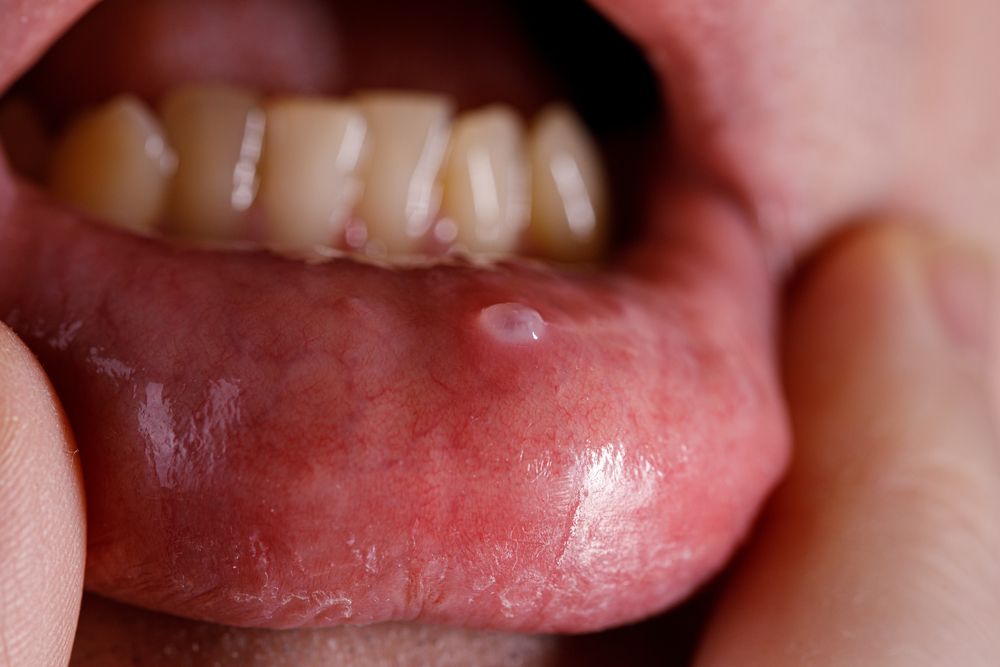
Lip Cancer
The skin of the lips develops lip cancer. Lip cancer can develop anywhere along the top or lower lip, although the lower lip is where it usually manifests. Lip cancer is regarded as a kind of oral (mouth) cancer.
Squamous cell carcinomas, which constitute the most common type of lip cancer, start in the squamous cells, which are tiny, flat cells found in the inner and outer layers of the skin.
Tobacco use and excessive sun exposure are risk factors for developing lip cancer. By using sunscreen or a hat to shade your face from the sun and giving up smoking, you may lower your chance of developing lip cancer.
Surgery to eliminate the cancer is typically the first step in lip cancer treatment. For minor lip cancers, surgery may be a simple procedure with little impact on your appearance.
Larger lip cancers may necessitate more invasive surgery. With careful planning and restoration, you can maintain your ability to consume food and talk properly and recover from surgery with a pleasing look. Other treatment modality for lip cancer is radiation therapy (External beam or brachytherapy). Your doctor will examine you and decide what treatment is required for your particular cancer.
Diagnosis:
Consult your doctor if you have any symptoms or indications of lip cancer. Your lips and other oral regions will be physically examined to look for any abnormalities and to rule out any other potential reasons.
A gloved finger will be used by your doctor to check inside your lips, and mirrors and lighting will be used to look inside your mouth. Additionally, they could check your neck for enlarged lymph nodes.
Your doctor will also inquire about your medical history, drug use, history of smoking and drinking, previous illnesses, medical and dental procedures, and family history of the disease.
A biopsy can verify the diagnosis of lip cancer if it is suspected. A tiny sample of the affected region is taken during a biopsy. The sample is subsequently examined under a microscope at a pathology lab.
The extent of the cancer's progression and whether it has spread to other body areas will be determined by a variety of different tests that your doctor may order if the findings of the biopsy reveal the presence of lip cancer.
Testing could involve:
- CT scan
- Chest X-ray
- PET scan
- Endoscopy
- Complete blood count (CBC)
Symptoms:
A soreness on the lips or within the mouth that refuses to heal is the most typical lip cancer symptom. People should consult a doctor if they develop mouth sores that fail to go away after two weeks or that heal only partially before returning.
Additional indications and signs of lip cancer include:
- A lip bump or significant swelling of the lips that are uncomfortable or numb
- Bleeding from lip lesion
- A white or crimson area on the lips
Like other cancers, lip cancer's early stages may not always be accompanied by noticeable symptoms. Sometimes people go to the dentist regularly and find out they have lip cancer.
It is imperative that you contact a doctor or dentist if you see any inexplicable sores or bleeding from your lips because the signs of lip cancer might be identical to those of other disorders. Regardless of whether the person has or does not have cancer, an injury or infection may require medical attention.
Treatment:
The most effective course of action depends on the extent and stage of cancer and includes a number of methods. Treatments for lip carcinoma include:
- Surgery. Your surgeon trims the lip and removes the cancerous growth. Reconstructive surgery might improve your appearance if you have a huge tumor.
- Radiation treatment This procedure targets and kills cancer using strong X-ray beams. Radiation therapy may be prescribed as a stand-alone therapy or as a follow-up to surgery to get rid of any cancer cells that could still be present.
- Chemotherapy. To kill cancer cells, medications are ingested orally or intravenously. Radiation therapy and chemotherapy are sometimes administered together. Chemotherapy may be suggested to relieve your symptoms if your lip cancer has progressed to other parts of your body and no other therapies are available.
- Specific pharmacological therapy. This method, which is frequently paired with chemotherapy, targets specific cancer cell genes and proteins. This may disrupt the environment of the cancer cells and result in their demise.
- Immunotherapy. This strengthens the immune system in your body and aids it in warding off cancerous cells. Both alone and in conjunction with other cancer treatments, immunotherapy is a viable option. Immunotherapy for lip cancer is normally only used when cancer has spread and when no other options remain.
Risk factors:
The following factors can raise your chance of developing lip cancer:
- Any type of tobacco usage, including snuff, chewing tobacco, cigars, pipes, cigarettes, and cigars, among others
- Excessive sunlight exposure on your lips
- Fair skin
- A lowered immunological response
Cancer often begins when cells' DNA undergoes alterations (mutations). The instructions that tell a cell what to do are encoded in its DNA. Whenever healthy cells would begin to die, the alterations would instruct the cell to start replicating uncontrollably and to live on. A tumor is created by accumulating cells, which can infiltrate and obliterate healthy bodily tissue.
Conclusion:
Finding out you have lip cancer can be frightening or depressing, mainly if your treatment results in facial deformity. However, cutting-edge reconstructive surgical techniques and cancer therapies can restore both your health and your appearance. Discuss your treatment options with your healthcare practitioner.






